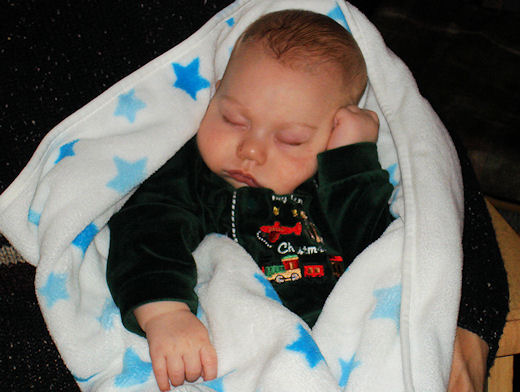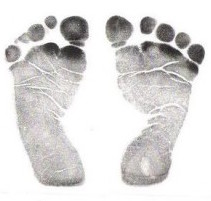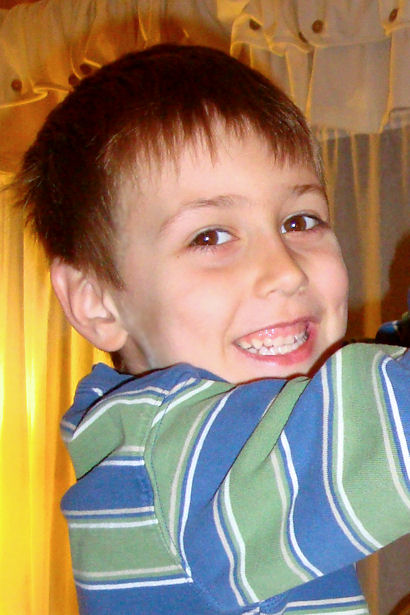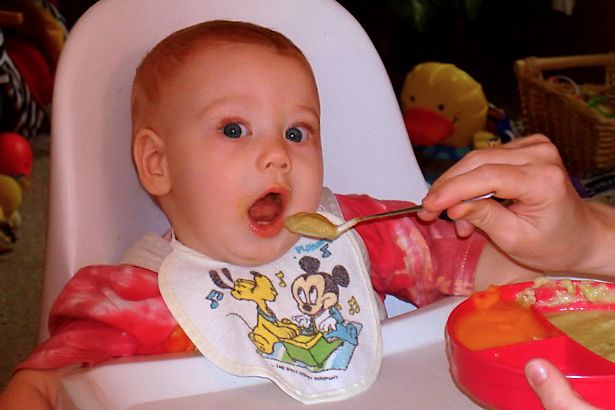I recently attended a Shaken Baby Training for my child care program, and would like to share what I learned.
Do have a plan to protect your child from Shaken Baby Syndrome?
If you’re a parent you need one, because in as little as five seconds your child’s life can be changed forever.
Shaken Baby Syndrome occurs when a baby or young child is violently shaken. As little as five seconds of shaking can cause irreversible brain damage or death. Some of the permanent effects of Shaken Baby Syndrome include:
- impaired motor skills
- impaired cognitive skills
- blindness
- cerebral palsy
- hearing loss
- spinal cord injury
- paralysis
- seizures
When an infant or young child is shaken the brain bounces back and forth inside the skull, causing blood vessels to tear and causing damage to the brain. Imagine a covered plastic container filled with gelatin. Mild shaking will cause the gelatin to separate from the sides of the container, harder shaking will cause the gelatin to break up, and prolonged severe shaking will cause the gelatin to liquify until it can be poured out of the container.
Violent shaking causes immediate damage to the brain, so symptoms of Shaken Baby Syndrome will usually appear right away. Symptoms may vary, and often appear to be a minor illness. Some of these minor symptoms are:
- Trouble sucking or swallowing
- Decreased appetite
- Trouble sleeping
- Fussiness or irritability
- Vomiting
Severe shaking causes more brain damage and obvious symptoms:
- Difficulty breathing or turning blue
- Lethargy or unresponsiveness
- Convulsions
- Unconsciousness
If you suspect your child is a victim of Shaken Baby Syndrome call 911 or take your child to the emergency room right away! Immediate medical attention may save your child from permanent problems and may even save your baby’s life.
As serious as Shaken Baby Syndrome is, it CAN be prevented! No one wakes up in the morning and thinks “I think I’ll shake a baby today.” Most Shaken Baby Syndrome occurs when a parent, babysitter or other caregiver becomes frustrated and loses control. The most common trigger for Shaken Baby Syndrome is inconsolable crying, but toilet training and feeding problems are other major triggers.
Everyone knows that it’s normal for babies to cry, but that doesn’t make it easy. Babies cry for many reasons and what matters most is how you deal with the crying. Some of the reasons that babies cry are:
- Hunger
- Tired
- Bored
- Scared
- Overstimulated
- Understimulated
- Too hot
- Too cold
- Wet
- Dirty diaper
- Anxious
- Sick
- Uncomfortable
- Want Mom/Dad/Other caregiver
- Just want to
When a baby is crying our instinct is to try to comfort the baby. Many times the baby can be comforted, but sometimes the baby is going to cry no matter what you do. Here are some ideas you can try to help soothe a crying baby:
- Check for illness or pain
- Feed slowly, burp frequently
- Change baby’s diaper
- Take baby for a walk outside
- Swaddle or cuddle baby in a blanket
- Play quiet music
- Run a vacuum or hair dryer away from baby
- Gently rub baby’s tummy, back or bottom
- Pat baby’s bottom gently and rhythmically
- Snuggle baby against your chest
- Rock
- Sing, read a book, talk softly
- Put baby in a baby swing
- Give baby a warm bath
- Reduce light, noise and movement
- Put baby in a vibrating infant seat
- Encourage baby to suck a pacifier or your pinkie finger
- Put baby in a sling or other baby carrier
- Try TV to distract baby
- Nurse baby if you’re breastfeeding
Having a plan for dealing with frustration is the key in preventing Shaken Baby Syndrome. Sometimes babies cry and can’t be soothed, no matter what you do. When you feel yourself getting upset remember that it’s more important to stay calm than to stop the crying. Some ways to keep your cool are:
- Gently place baby in a safe place, like a crib, and leave the room for ten minutes
- Imagine yourself in a relaxing place, like a beach
- Listen to music
- Call a friend or relative
- Take a shower or bath
- Exercise
- Read a book or magazine
- Close your eyes and take deep breaths
- Ask friends or relatives for help
- Count to 100
- Write down 5 best things about yourself
- Write down 5 best things about your child
- Do housework, like vacuuming
- Use positive self-talk such as “I am a good parent” “I can stay calm” “Baby knows I love him”
- Do something that makes you laugh
- Rip up a telephone book or newspater
- Beat on pillows, cushions or a mattresses
- Join a parenting group for support and encouragement
- Yell in your head, into a pillow or in a room away from others
- Call the baby’s doctor or a nurse helpline
- Whatever else it takes to keep yourself calm and your baby safe
Babies cry, but if you have a plan to soothe baby, to keep yourself calm and where to get help you can keep your baby safe from Shaken Baby Syndrome. Remember that it’s more important to keep yourself calm than to stop the crying, and NEVER shake a baby or young child!











Amy,
This article is wonderful. If you don’t mind, I’d like to post a link to it from my blog.
It’s a subject that touches my heart.
Thanks for the great post!
Sher 🙂
hi.. can u give me more information about SUNSET SYNDROME because my baby was diagnosed today having this through her eyes and i was asked by her doctor to see an ophthalmologist.
thanks
I’m sorry I don’t know anything about Sunset Syndrome as it pertains to infants. Perhaps you can call your doctor or an opthamologist in your area and ask for more information about Sunset Syndrome. Good luck!